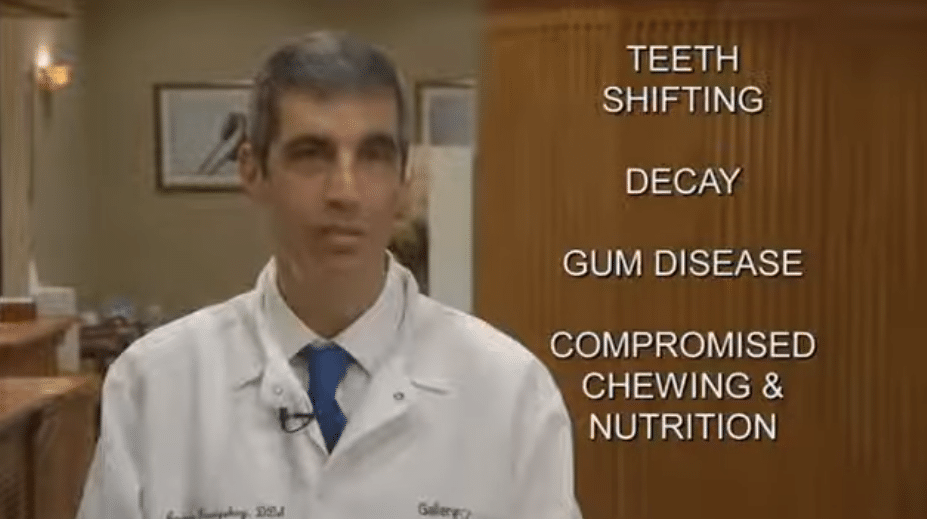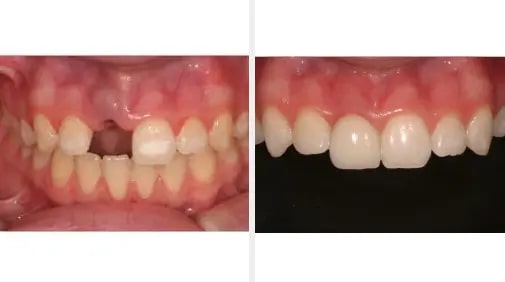At Gallery57Dental, our experienced dentists off minimally invasive dental implants to patients in NYC! These implants hold several advantages over traditional implants, and patients wishing to learn whether they are a candidate should call 212.246.8700 today to contact our office!
Benefits of Minimally Invasive Dental Implants

Dr. Andrew Koenigsberg explains minimally invasive dental implants and how they may help you!
These are the benefits of having minimally invasive dental implants instead of traditional implants:
- Far fewer appointments necessary
- Gentler and less invasive
- More precise implant placement
- Protects gum tissue and vascular periosteum tissue
- Virtually painless thanks to precision 3D digital mapping
- Shorter surgical time
- Far shorter overall process, two days compared to six months
- Faster healing
- Less manipulation of gum tissue, typically doesn’t require any sutures
- Ideal for high-risk patients such as those on blood thinners or with diabetes
- Fewer complications, especially due to infection
- Virtually the same success rates as traditional dental implants
What Are Minimally Invasive Dental Implants?

Minimally invasive dental implant placement is a revolutionary step forward in permanent teeth restoration. Often in two visits, patients who are missing teeth or frustrated with poor fitting dentures can walk out with precisely fitting, esthetic implants. 3D visualization of your jaw eliminates the guesswork. This means less surgery, fewer dental visits, faster healing and long-term success.
Using advanced 3D digital imaging we get an accurate picture of the bone and teeth. With our Sidexis software, we can virtually place the implants in the ideal location. Working with our in-office lab, Same Day Ceramics, we create a surgical guide that allows us to place the implants in exactly the planned location with minimal surgery
The result is a functional and esthetic implant restoration with minimal discomfort and disruption to their lives.
Who is a good candidate for Minimally Invasive Dental Implants?
- Patients who are missing one or more teeth due to injury, disease or tooth decay
- Those frustrated with loose or poor fitting partial or full dentures
- Patients with adequate gum and bone

View Dental Implant Before & Afters
Example #1

Example #2

How long does it take to place minimally invasive dental implants?
Placing minimally invasive dental implants usually takes two appointments. The first appointment is concerned with preparing the gums or removing the heavily damaged tooth. We also gather the data necessary to create the custom surgical guide in our Same-Day Ceramics in-house lab. We will also mill your porcelain artificial tooth after this first appointment.
In the second appointment, we place the surgical guide, drill the tiny hole for the mini implant, place the implant, and attach the crown/artificial tooth. That’s it.
Now you have a new tooth in basically one day.
How are minimally invasive dental implants different from traditional dental implants?
Minimally invasive implants are smaller than traditional ones. The implant base consists of a tiny titanium rod, approximately the diameter of a toothpick. This contrasts with the screw-shaped traditional implant base. The diameter of these implants is from 2.0 to 3.0 mm; conventional implants are anywhere from 3.0 to 5.0 mm in diameter.
Minimally invasive dental implants also don’t use a post, or abutment, as is the case with traditional implants. Instead, minimally invasive implants are a single piece consisting of the base and a ball top to which the artificial tooth will attach.

The method of placement is also different, hence the minimally invasive title. Rather than opening the gums to place the implant base, as with a traditional implant, we place our custom-made surgical guide over the gum area. This allows our Gallery 57 dentists to drill and place the implant from above the gums. We simply drill the tiny hole instead of opening the gums to access the jawbone beneath. There is no need to close the tiny hole with sutures, as with a traditional implant. Plus, the second step of placing the implant post isn’t required.
This makes minimally invasive implants easier to place, with less trauma to the gum tissue. Also, thanks to our 3D digital imaging and the surgical guide created in our in-house lab, our implant placement is ultimately precise. This also minimizes the gum incisions necessary, making for easy, fast recovery.
Patient Testimonials


Additional FAQs About Minimally Invasive Dental Implants
There isn’t any preparation necessary. Because we only use local anesthetic for these simple procedures, there aren’t any restrictions on eating before your appointment.
All dental implants, whether minimally invasive or traditional, only require regular home hygiene, brushing twice a day for two minutes and flossing once a day. That is the regimen when you’re replacing individual teeth with individual implants. If we’ve used minimally invasive implants to anchor full or partial dentures, you’ll also need to clean the gums under the prosthetic in addition to brushing and flossing.
Teeth whitening treatments only work on natural tooth enamel; they do not whiten porcelain or composite resin. However, the dental-grade porcelain we use for our crowns is highly impervious to staining, so your implants will stay whiter than your natural teeth.
The implant base is made of titanium. The implant artificial tooth, or crown, is usually made from dental-grade porcelain.
Call Gallery 57 Dental For Minimally Invasive Dental Implants In NYC!
If you're interested in learning more about minimally invasive dental implants please contact us for a consultation with one of our NYC dentists at 212.246.8700 or fill out our contact us form. We will discuss your needs and concerns, and determine your best course of action.
